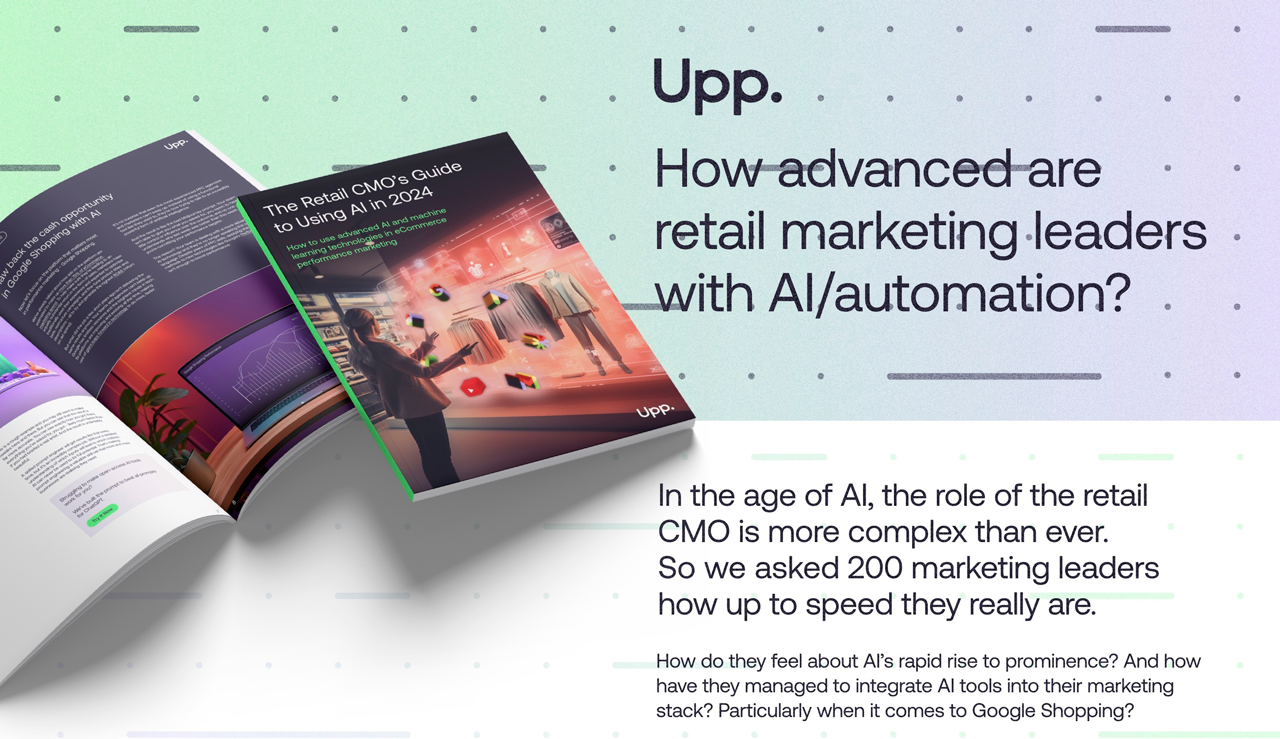The power of search and decoding the path to discovery
Search as the Gateway: maximising influence at the discovery stage
From the many channels vying for consumer attention, search engines emerge as the most influential tool at the early stages of the customer journey.
£31.4 billion of retail spend originates from consumers discovering brands or products through search engines. They rank as the most effective channel for brand awareness, directly influencing 12% of spend and outperforming other digital and physical touchpoints (Fig 3).

Source: Upp.ai, Retail Economics
Search as a critical discovery tool
Within the digital landscape, online search remains a critical tool in guiding consumers through their discovery process. With the rise of sophisticated personalisation, search engines now enable retailers to deliver hyper-targeted and relevant content that meet consumers' needs at every stage of the journey.
Paid search, in particular, has become a crucial driver of traffic and conversions, allowing brands to capture high-intent shoppers at the exact moment they are actively looking for products. As technology advances, the ability to use search intelligently—optimising for keywords, timing, and relevance—will be a key differentiator in the battle for consumer attention and sales.
This dominance arises from search engines blending paid ads with organic results, making brands immediately visible at the critical moment when consumers are searching online. Paid ads, in particular, can be highly effective. They position brands at the top of search results, commanding attention. This instant visibility, combined with the extensive options available through organic search, makes search engines incredibly powerful for discovery.
Retailers undervalue search influence
While retail brands understand the power of digital channels in driving brand discovery, many underestimate the critical role search engines play. We asked consumers and retailers to carefully consider the different channels and rank them according to their perceived influence in driving awareness of retailers and consumer brands (Fig. 4).
Our research shows that from a consumer perspective, search engines dominate the channel mix when it comes to brand awareness; yet retailers rank them as only third influential (9.6%) in effectiveness, appearing to focus more on their websites and social media.

This perception gap (highlighted in Figure 4) presents a huge opportunity. Retailers potentially overlook an estimated £6.7 billion in annual sales, or £146 per shopper, by not prioritising online search in their digital strategies.
This untapped potential is partially being captured by competitors who have optimised their presence across search engines; and while newer channels like marketplaces and social commerce are gaining traction, the notion that search engines are losing their importance is misplaced.
Closing the gap: Mastering search for the modern consumer
Why do retailers continue to undervalue search engines? One reason is the complexity and cost of getting search strategies right. Although search is vital at both the discovery and research stages, it’s also highly competitive, requiring brands to fight for visibility. This often results in retailers focusing on areas involving greater control, like their websites, where they can achieve quicker returns.
However, underinvesting in search leads to missed opportunities at critical points in the customer journey. To address this, retailers need to consider elevating their search approach by optimising both paid search ads and organic content to ensure visibility. Mastering search engines enables retailers to align more closely with consumer behaviour, build trust, drive traffic, conversions, and long-term loyalty.
Turning research into revenue: The influence of search engines at the consideration stage
Search engines are not just about discovery; they play a crucial role further down the customer journey, particularly at the research and consideration stage where consumers have high purchase intent.
Digital channels—led by search engines—dominate not only brand awareness but also the research phase, accounting for 48% of all research occasions (Fig. 5). This underscores their pivotal role in helping consumers make informed and confident purchasing decisions.

Consumer trust in search engines
Search engines have firmly established themselves as one of the most trusted channels in retail. With a net 65% of consumers expressing trust in search engines, they surpass even retailers’ own websites as reliable sources for pre-purchase research (Fig. 6).
Their historical reliability with neutral, unbiased information, makes them invaluable at this stage. Shoppers regularly ‘google’ brands they are unfamiliar with to assess their trustworthiness.

Interestingly, trust in search engines increases with household income. This may be due to higher-income consumers engaging in more frequent, high-value purchases, where access to comprehensive and unbiased information is crucial.

In fact, today’s consumers now consult at least three online sources on average during their research process for big-ticket items (Fig. 8). Here, search engines act as a gateway to other resources such as product reviews, retailer websites, and social media posts. 72% of consumers cite search engines as their first port of call when conducting in-depth research on new products or services.

For retailers, building trust through search is key to driving conversions. Shoppers who trust the information they find are more likely to visit retailer websites, purchase, and remain loyal over time. As consumer expectations continue to evolve, the brands that effectively leverage search engines to build confidence and guide consumers through the pre-purchase journey will see the strongest results.
Targeting valuable customers: the influence of search on retail’s biggest spenders
Search influence and age
Search engines play a pivotal role in influencing consumer behaviour across all age groups, but their impact is most pronounced among big spenders, notably for those aged 45 and above.
Despite not being part of the ‘digital native’ generation, these consumers—often referred to as ‘digital adopters’—have embraced search engines within the customer journey. This is particularly surprising considering these older cohorts are not typically seen as the most digitally savvy. Nevertheless, the data shows that search engines directly influence a greater share of spend within this group compared to younger cohorts.
In fact, the 45-54 age group experiences the most impact, with search engines influencing 16% of their non-food purchases—more than any other age group. Crucially, this cohort also spends the most on non-food retail, at £6,500 on average per year.

This key insight highlights the importance of optimising search strategies not just for younger demographics, but for the middle-aged, highest-spending cohorts too. Overlooking this point risks missing out on the substantial revenue opportunity this consumer group can offer.
Search influence and spending potential
Our research shows the correlation between search influence and retail spend become more pronounced with age. Younger consumers, while digitally engaged, contribute less overall spend.
Meanwhile, those aged 45-54—the ‘prime earners’—show the highest per capita spend influenced by search, making them a key target for retailers looking to capture high-value transactions.

While younger consumers, particularly those aged 18-34, engage heavily with digital channels, their overall retail spend per capita remains much lower compared to older shoppers. Meanwhile, those aged 45-54, account for a disproportionate share of retail expenditure, making them a high-priority demographic to target.
Importance of search for high spenders
The reliance of this group on search engines is tied to several factors. With more disposable income and more complex purchasing decisions (e.g. family needs, home improvements), this group engages in more research-heavy shopping missions. They use search engines to compare higher value products, warranty periods, insurance options, and to verify information to essentially ensure value for money and peace of mind. In this context, search becomes more necessary and a ‘go-to’ tool for conducting the vastness of research required to make a trusted purchase.
Unlocking the power of shopper cohorts: Tailoring search strategies for different missions
A one-size-fits-all approach to consumer engagement is highly ineffective today. A deep understanding of the different shopping missions and specific cohort search behaviours is essential to unlock opportunities embedded in hyper-personalisation and targeted strategies.
Our analysis reveals four distinct pre-purchase search cohorts, each with unique preferences and priorities when it comes to how they search for and evaluate products online (Fig. 11).

These cohorts not only highlight the importance of diverse search strategies, but also illustrate how retailers can align their efforts with specific consumer behaviours. Whether it’s streamlining the path to purchase for ‘Convenience Seekers’ or offering detailed content for ‘Informed Buyers’, the key to driving conversion lies in catering to the right behaviours with tailored search and discovery experiences.
Leveraging paid search: A key driver of retail success
Paid search ads are essential to a comprehensive digital marketing strategy as they deliver measurable outcomes that drive traffic and boost conversions amidst many other benefits for both retailers and consumers (Fig. 12).

Our research shows that 73% of retailers report that paid search outperforms organic search in driving traffic, while 59% say it often (or always) leads to increased conversions. The effectiveness of paid search ads is even higher for large retailers with well-funded campaigns to capitalise on opportunities (Fig. 13).

From a consumer perspective, the influence of paid search is especially notable among Digital Natives (under 45 years old), where 71% say that paid search ads influence their purchasing decisions. Again, this highlights the importance of paid search in engaging younger, digitally active consumers, accustomed to receiving relevant and timely ads during their online shopping journeys.

However, there are many opportunities for retailers to improve. While paid search ads are highly effective, some consumers are less reactive to them: 45% treat them with caution, preferring organic search results.
This suggests that retailers need to refine their ad strategies, focusing on greater relevance and personalisation to unlock the full potential of paid search. Poorly targeted or irrelevant ads risk undermining consumer trust.
Personalisation through paid search
As personalisation becomes increasingly important for online shoppers, the relevance of paid search ads is more critical than ever. Our data shows that 93% of retailers acknowledge the need to deliver more personalised content, such as product recommendations or advertisements. Personalised paid search ads present a vast range of opportunities to overcome consumer reluctance by making ads more engaging, targeting users based on their specific behaviours and preferences.
For retailers looking to remain competitive and drive more conversions, refining paid search strategies to ensure precision and relevance is essential.

The hidden power of product data
Product data complements customer data for holistic visibility
To unlock the full potential of paid search, retailers must go beyond focusing solely on customer data. Product data can work in tandem with customer insights to ensure full visibility across the entire product range. By integrating rich product data—such as availability, attributes, and pricing—alongside consumer intent signals, retailers can make their entire inventory discoverable to the right customers at the right time. This ensures that every item, from ‘bestsellers’ to niche products, can be positioned effectively in search results, improving visibility and conversion rates across the board.
Optimising campaigns for profitability and growth
AI-driven analysis of product data allows retailers to tailor ad campaigns based on strategic goals—whether it’s driving growth, boosting profit margins, or a blend of both. For instance, high-margin products can be promoted during peak demand periods, while inventory-heavy items can be surfaced through promotions to drive turnover. Utilising product data in this way provides a granular level of campaign control, enabling adjustments on factors like profitability or seasonal growth priorities, ensuring retailers maximise ROI from their search investments. AI’s ability to dynamically adjust ad spending based on product performance provides a level of agility and profitability optimisation that is unattainable with traditional methods.
Real-time market feedback for a competitive edge
In today’s retail landscape, staying competitive means constantly evolving alongside shifting consumer trends. Product data can play a crucial role in this process by providing real-time feedback on how products are resonating in the market. Using AI, retailers can interpret these signals (e.g. fluctuating click-through rates, conversion metrics, or competitor pricing) to make informed, real-time adjustments to product listings and ad strategies. This ability to pivot quickly helps retailers maintain a compelling proposition that aligns with consumer demand and responds effectively to market pressures.






